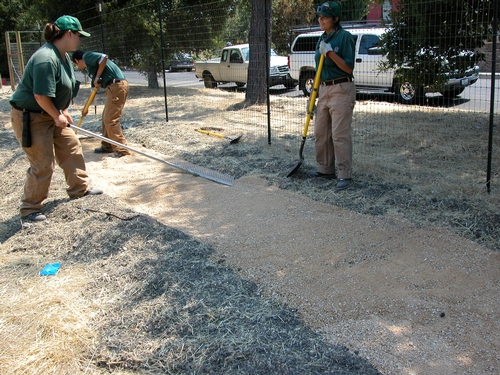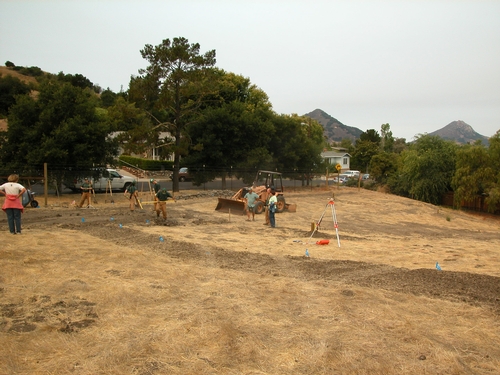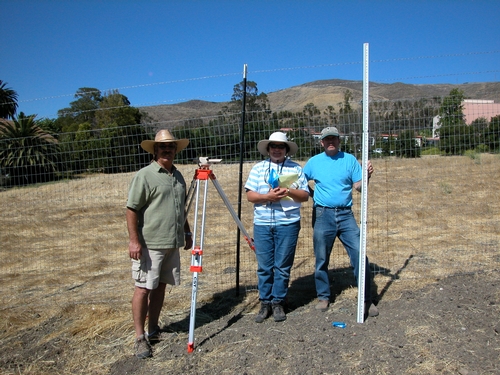- Posted By: Amy Breschini
- Written by: Lee Oliphant
The worm bins are $120 and must be paid for online or by check. Please make checks payable to "UC REGENTS".
Our next class is scheduled for September 8, 2012.
You can place your order by clicking on this link or reserve a spot if you would like to sit in:
Below is a little article by Lee Oliphant.. Thank you Lee!
Worm Composting - Composting on a Small Scale
By Lee Oliphant, Ed.D., Master Gardener
Traditional composting is not for everyone. Some folks just don’t have the space for composting bins but would love to have some of the “black gold” plant food that composting provides. If you want to try composting on a smaller, more concentrated level, worm composting (or vermicomposting) might be the answer for providing food for your plants while recycling kitchen scraps and newspaper or shredded office paper. The resultant castings provided by worm composting is a nutrient rich additive to soil. The leachate caught from the box can also be diluted and used to water ornamental plants.
Worm composting requires a shady, cool place for your worms to live. You will need only a few things to begin worm composting: a worm bin, newspaper bedding, kitchen scraps and, of course, your little “Red Wigglers” (Eisenia foetida).
Your Worm Bin
Commercial worm bins are available or you may begin your worm composting you might want to purchase a simple 5 to 10 gallon plastic tub with a lid that snaps shut. Worms like darkness, so an opaque bin is best. Drill 1/4 inch holes around the bin about 4 inches down from the top and 2 to 4 inches apart.
Worms thrive in temperatures between 50 and 75 degrees. Options for bin locations are the garage, basement, a shady deck or area in your garden, or in a garden shed. In the winter, make sure that the box is sheltered from the rain. The worms require oxygen and will easily drown!

Worm Bedding
In their natural habitat, “Red Wigglers” live in piles of fallen leaves above the soil surface. The best bedding in your bin is shredded paper such as uncolored newsprint or cardboard. Prepare your worm bedding by wetting the paper and wringing it or drain it until is like a wrung-out sponge. Separate the damp strips.
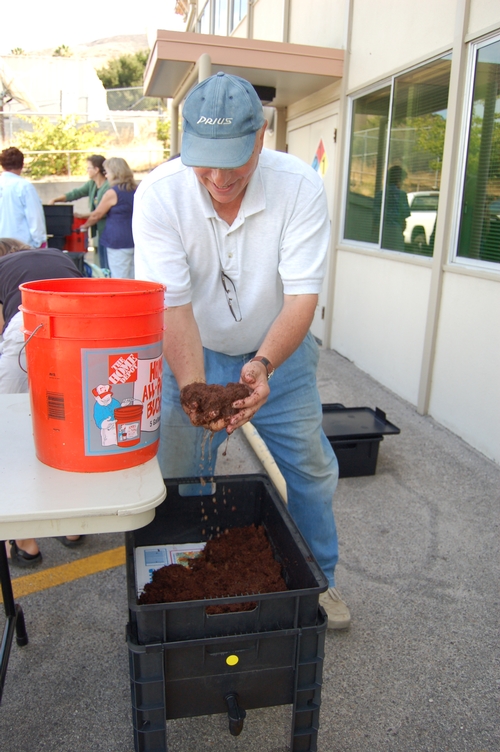
Worm Food
A pound of red worms need about a pound of scraps each week. They eat just about any part of fruits and vegetables, coffee grounds and filters, tea bags and watermelon rinds. To begin, layer about a pound of scraps over the bedding. Do not put meat, oils, cat or dog feces, or dairy products, citrus peels or bread that contains yeast in your bin! While worms can survive longer without food, they enjoy a weekly feeding.
The Worm Crew
”Red Wigglers” Eisenia foetida (not to be confused with earthworms) can be purchased at garden centers, bait shops or from suppliers on the Internet. You will need less than a half-pound of worms to begin your worm composting. Worms need to be separated from their casting about twice a year. One method for separation is to push the decomposed material to one side of the bin and remake the worms’ bed with paper and kitchen scraps. Worms will eventually migrate to the freshly filled side of the bin leaving you with fresh compost.
Another method for those of us who can’t wait for the wigglers to meander to “greener” pastures so that castings can be harvested is to expose the open bin to bright light or sunlight. The worms will dive for darker quarters. After a few minutes, remove the top inch (sans worms) and repeat.

Your Payoff
Worm compost is ready to use when all vegetation has been digested. It is very concentrated. You can sprinkle and dig it into freshly cultivated soil or mix one part worm compost to four parts potting mix. .
There are many informational resources for worm composting available. California Department of Resources Recycling and Recovery has an excellent resource page. “Worms Eat My Garbage” by Mary Appelhoff is a book that provides extensive coverage on the subject. Her Web site is wormwoman.com.
Having trouble with your worm bin? Contact the Master Gardeners! mgsanluisobispo@ucdavis.edu
Click HERE to read more articles about Worm Composting.
Did you find some weird larvae in your worm bin?
Click here to see the image.
Soldier Fly Larvae seems to appear in my worm box throughout the year. Once you recover from their ugliness, you will find that they are excellent composters and the flies are never even seen!
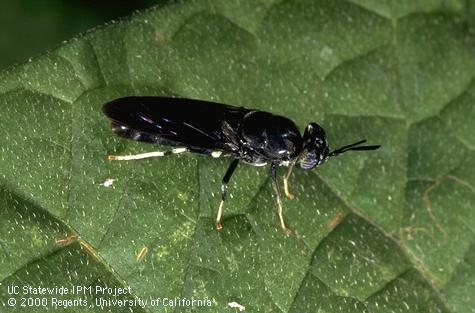
- Author: Amy Breschini

By Mary Bianchi UCCE Horticultural Advisor
Advice to Grow By From UCCE Master Gardeners
Do you need gardening advice to help you grow a more sustainable garden or landscape? The University of California Master Gardeners are proud to invite you to our newly created Demonstration Garden for our inaugural "Advice to Grow By" program! Monthly workshops will be held every third Saturday, beginning January 16, from 10 am to noon at the Demonstration Garden. The Garden is located at 2156 Sierra Way in San Luis Obispo, immediately north of the UCCE office, and represents a cooperative project between the County of San Luis Obispo and the University of California.
The creation of the UCCE Demonstration Garden provides a living classroom for the community where Master Gardeners can support sustainable landscape practices with our "Advice to Grow By" workshops. Local gardeners will learn from the Master Gardeners as the many projects in the Garden are developed. Look for upcoming workshops on orchard planting techniques, designing a kitchen garden, and creating raised beds.
Our January 16th workshop on "Capturing Rain Water in the Landscape" will demonstrate landscape practices that help to conserve our precious water resources. Sustainable water conservation practices are important activities for San Luis Obispo County gardeners, even as we enjoy our recent rains. We will be demonstrating rain harvesting techniques including rain barrels, and discussing rain gardens for Mediterranean climates and storm water management practices that protect water quality while keeping rain water on the site. Our February 20th workshop will demonstrate orchard design and fruit tree planting techniques.
Mark those brand new calendars as a reminder to join the Master Gardeners each third Saturday of the month for the advice you need to grow your own sustainable landscape! Gardens large or small, for flowers or food, the Master Gardeners have the help you need. Follow our "Advice to Grow By" calendar at http://ucanr.org/slomg.
Got a Question?
Contact the University of California Cooperative Extension Master Gardeners: at 781-5939 from 1 to 5 p.m. on Monday and Thursday; at 473-7190 from 10 a.m. to noon in Arroyo Grande; and at 434-4105 from 9 a.m. to noon on Wednesday in Templeton. Visit the UCCE Master Gardeners Web site at groups.ucanr.org/slomg/ or e-mail mgsanluisobispo@ucdavis.edu.

- Author: Amy Breschini
So much has happened!
Here's a little summary of the garden to date:
(Please forgive me if I forgot someone or something...things are moving and shaking now! A special thank you for Susie who has been recording everything daily! Much of this was extracted from the communication that she has been doing with the Demo Garden Committee! Please feel free to comment on the post if you believe I forgot something or if there are any corrections.)
Weds. July 8: An irrigation committee (Ray and Wes from the new class are the expert leads along with our architect Scott Dowlan, and the Giambalvo bros.) met to lay out a plan of attack!
Tuesday, July 14: Wes, Ray, Ed, Susie, and Thorv met with Mary B. to go over details of the installing the irrigation. We've had an "all clear" from the utility companies that there are no underground utilities present on our site!
Thursday, July 16: Wes, Ray, Bill, Ed, and Thorv mapped out with blue spray paint the lay out of the irrigation system
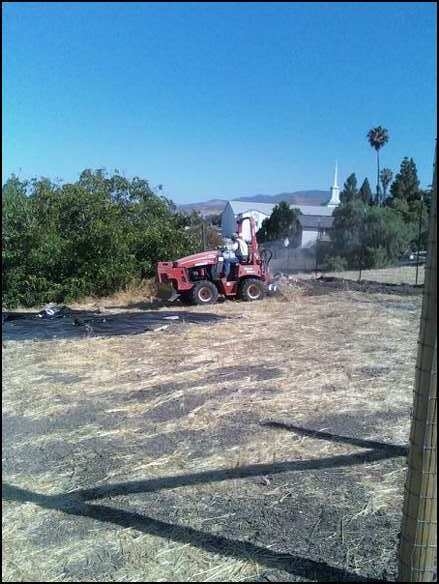

Friday, July 17: Trencher was brought in from United Rentals as a donation coordinated by Wes! The entire layout was trenched out from 8:30- 10:30am. Bill helped out this afternoon with shoveling!
Saturday, July 18: Irrigation assembled and installed all with tracing wire by Wes and Bill and supported by Susie and Thorv. Wes received a donation for all of the pipe from Farm Supply San Luis Obispo! System was fully checked for leaks. 6 Hose bibs and 4 valve box manifolds. There are ball valves at all 4 corners of the irrigation, so there's easy shut off in the case of a leak. The pipes that are near any old underground rocks or concrete have been insulated so that there's will be no rubbing or contact with abrasive edges. We owe Wes and Bill a very big thank you for all of there expertise and hard work! We have our own water meter that will track the water used for the garden and great water pressure! Yippee!!!

Pathways: There's lots of rules and regs to meet the American's with Disabilities Act compliance. Many excruciating hours were spent surveying the area with Ed, Ray and Susie to find the best pathways possible to meet this compliance! Here's a link for more information about the regulations for ADA compliance:
http://www.ada.gov/reg3a.html#Anchor-18203
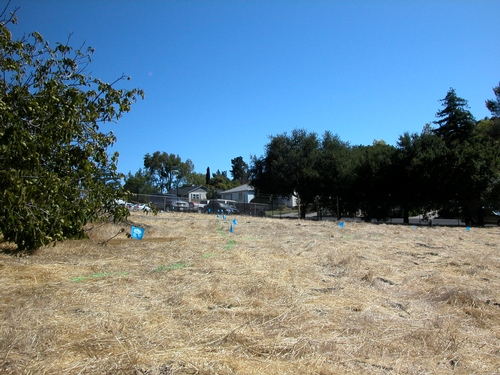
Monday, August 10: We were lucky enough to have the CCC Youth Group come for a week to help out! They arrived about 9:00am! Thorv, Marylou, Susie, Ray, Ed, Mary and Amy were present. Thorv did a very nice job of explaining to them what the mission of the MG program is about and how we hope to use the demo garden. Then Ed and Ray showed the group how to use the transom to map out ADA compliant pathways and spent the rest of the day helping to supervise the crew. They started out the raking out the soil at the utility pad area and all the pathways and using the soil compression vibrator- which broke its' belt almost immediately! Once that was fixed, then the engine kept flooding.. so there's always a few little bumps in the road. Ray coordinated borrowing the county golf course compactor for the next couple of days. He’s not sure if they will stay on schedule right now, but the DG is being deliverered tomorrow! There's a whole lot of surveying and using levels. It's very challenging and Ray and Ed are really doing an awesome job at meticulously checking and rechecking our grade to meet the ADA compliance!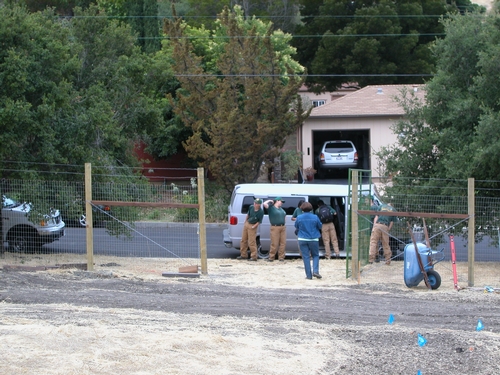
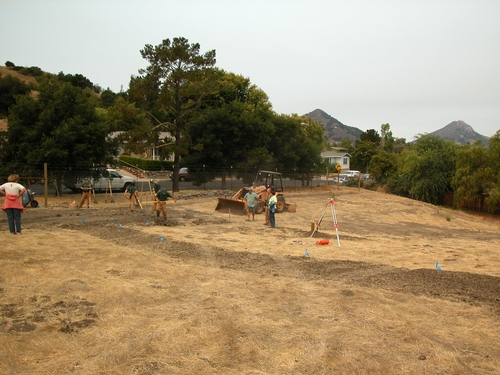
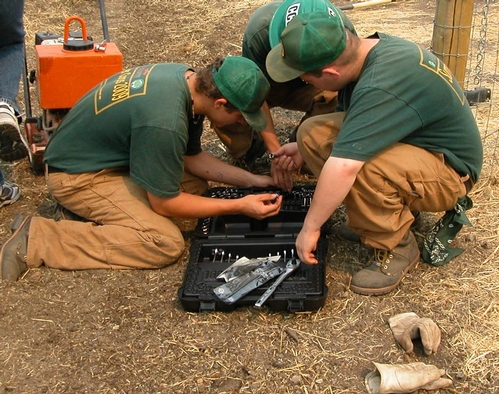





Tuesday, Aug 11: Fifty tons of decomposed granite was delivered to our garden. Ray and Ed were again on site to help supervise the youth crew (four called in sick today) .... we had a reduced number of workers but we still made progress on the pathways. Nell was there in the morning to help with snacks and to serve lunch. Carol Dulitz served a wonderful lunch of tacos, beans, cookies and ice cream. Jutta brought boxes of fruit. The crew members are so appreciative of the special care they are receiving from our MG's. After lunch Susie taught a lesson on invasive species and the purpose of the trapping program of SLO county.

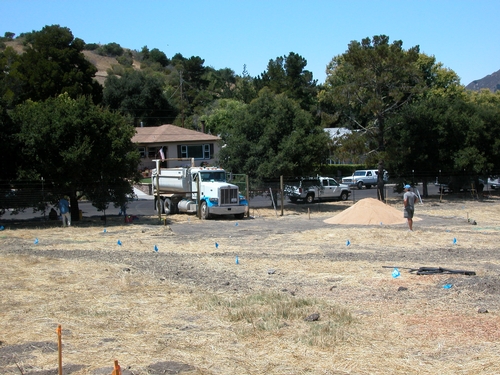
Weds, August 12: Another productive day in the garden! Today we finished putting most of the DG on the pathways and utility area....it looks great! We even have a special focal point! Ray and Ed continued to supervise the troops and we really owe them a vote of thanks. Wes came out this afternoon and did some needed tractor work. Alice brought some wonderful snacks for the crew and Jutta bought pizza for lunch. Nell was there in the morning and Susie was there in the afternoon to help serve and clean up. Wes also did a great lesson for the crew on irrigation systems and how ours was put together. Then Mary had the crew making mud pies as she taught them lessons on how to tell the difference between soil types and she did a great demo on soil erosion. Scott, the landscape designer that did our initial plan came out to see what we have done so far and seemed to be pleased.

Thursday, August 13 Major progress was made on the pathways! The kids are getting burned out. Today was 94F early in the day with no breeze and tomorrow is their last day with the CCC, so they have a bit of senior-itus going on. Four of them called in sick, but the crew manager went to their houses to pick them up. The D.G. is being raked level, water it in once or twice and it sets up. DG is a great product to use because it is a semi-permeable, temporary pathway that can be packed firm enough for wheel chairs to use with out getting stuck (that's what happens in gravel!) Cindy taught a lesson on water conservation practices after lunch. The students had a lot of curiosity. It was really funny that all of them were most curious about low flow toilets and self-composting toilets.. She did a wonderful job. 
